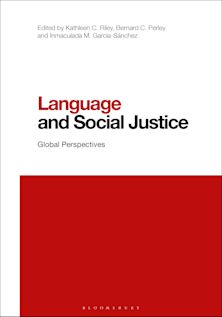- Home
- ACADEMIC
- Politics & International Relations
- Global Politics
- Avoiding Armageddon
Avoiding Armageddon
Europe, the United States, and the Struggle for Nuclear Non-Proliferation, 1945-1970
Avoiding Armageddon
Europe, the United States, and the Struggle for Nuclear Non-Proliferation, 1945-1970
This product is usually dispatched within 10-14 days
- Delivery and returns info
-
Free UK delivery on orders £30 or over
You must sign in to add this item to your wishlist. Please sign in or create an account
Description
From the destruction of Hiroshima to the conclusion of the Nuclear Non-Proliferation Treaty in 1968, the international community struggled to halt the nuclear arms race and to prevent the annihilation of humanity. This study offers an accessible and authoritative account of European policy in this critical dimension of world politics. How much influence did Europeans exert in Washington? Why were European objectives often at variance with U.S. expectations? To what extent did differing national agendas on non-proliferation cause friction within the Western Alliance? Schrafstetter and Twigge examine five initiatives designed to prevent or restrain the nuclear arms race: the international option, the commercial option, the moral option, the multilateral option, and the legal option. Their conclusions show the extent to which non-proliferation policy dominated European politics and the transatlantic relationship.
The international option focuses on early UN plans for international control of atomic energy (1946-48). The commercial option assesses the influence of Eisenhower's Atoms for Peace proposal of 1953 and the impact of civil nuclear power. The moral option charts international attempts to outlaw the testing of nuclear weapons, resulting in the 1963 Partial Test Ban Treaty. The multilateral option discusses the role of collective nuclear forces in addressing West German demands for nuclear equality within NATO. The legal option explores British, French, and West German attitudes to nuclear disarmament and charts the international drive to stop the spread of nuclear weapons culminating in the signing of the Non-Proliferation Treaty in 1968. Throughout the analysis, attention is focused on the role of the European powers and their influence on both Washington and Moscow.
Table of Contents
The International Option: UN Control of Nuclear Weapons, 1945-1948
The Commercial Option: Nuclear Warfare? Atoms for Peace and the UN Disarmament Commission, 1948-1958
The Moral Option: Western Europe and the Test Ban Treaty Negotiations, 1954-1963
The Multilateral Option: Alliance Cohesion and Collective Nuclear Forces, 1957-1965
The Legal Options: Negotiations for the Nuclear Non Proliferation Treaty, 1961-1969
Conclusion
Bibliography
Product details
| Published | 30 Apr 2004 |
|---|---|
| Format | Hardback |
| Edition | 1st |
| Extent | 256 |
| ISBN | 9780275975999 |
| Imprint | Praeger |
| Dimensions | 235 x 156 mm |
| Publisher | Bloomsbury Publishing |
About the contributors
Reviews
-
As Americans and Europeans debate global priorities and nuclear terror, this studied history of trans-Atlantic nuclear relations takes on added import. Schrafstetter and Twigge present a sophisticated and readable portrayal of the varied motives of the major powers, the realities of power and influence, and occasionally principled policymaking. . . . Recommended. Lower-division undergraduates and beyond.
Choice
-
[A] mind expanding experience. Susanna Schrafstetter and Stephen Twigge have performed a needed service in analyzing the contributions made by Great Britian, France, and the Federal Republic of Germany (FRG) in the struggle to control the bomb. . . . Avoiding Armageddon masterfully transforms the Europeans from merely bit players lurking in the wings of the Cold War to the center stage of world politics.
Journal of Cold War Studies



































